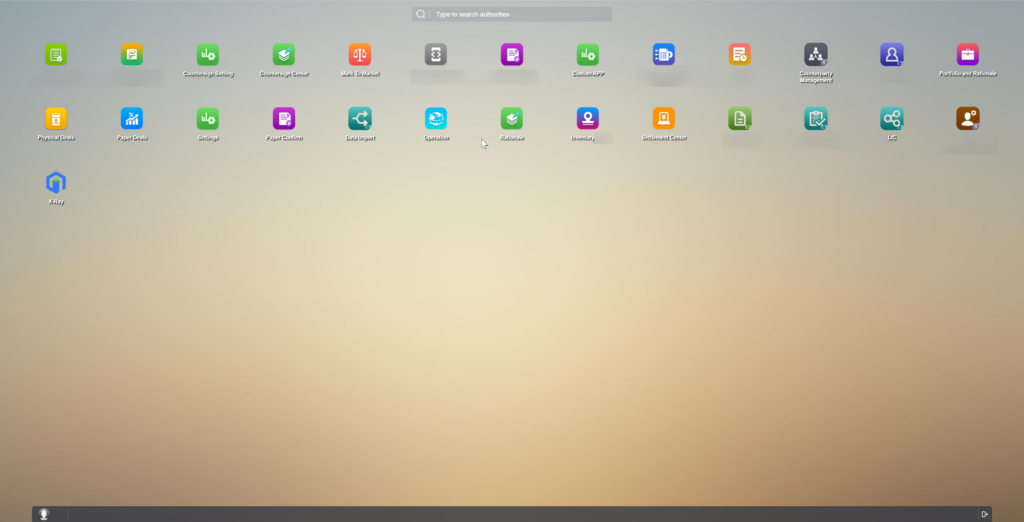The commodities trading industry is known for its complex transaction structures, high risk control demands, and volatile market environment. Enterprises must balance global operations, cross-department collaboration, and precise risk control in trading. However, traditional general-purpose management platforms or specialized trading tools often fall short in addressing such complexities.
The Fusion system breaks these limitations. With its unique design, it seamlessly integrates the functionalities of a specialized trading tool and a general-purpose management platform, offering comprehensive solutions to address core pain points for enterprises.
As a professional trading and risk management tool, Fusion’s core strengths lie in its precision and automation. These features enable enterprises to efficiently manage the entire process, from physical trades to financial derivatives trading.
- Physical Trading Module: Supports a series of trading management processes, including trade execution, inventory, transportation, logistics, product quality, and processing.
- Financial Trading Module: Covers functions like hedge management, futures trading, and settlement, allowing comprehensive tracking of market price fluctuations and risk assessment.
- Risk Management Module: Manages market, credit, and compliance risks, helping enterprises identify and address potential market volatility, credit defaults, and compliance issues.
As a general-purpose management platform, Fusion integrates financial, data, and collaboration management functionalities, enhancing operational efficiency and resource utilization.
- Financial Management Module: Covers settlement, cash flow, revenue, costs, and residual payments, generating diversified financial reports to support precise decision-making.
- Data Management Module: Provides comprehensive data management functions to consolidate business data, improving decision-making accuracy and timeliness.
- Collaboration Management Module: Supports cross-department collaboration, approval workflows, and document management to promote efficient teamwork and information flow.

This article analyzes the challenges faced by enterprises in commodities trading and explores how the Fusion system addresses these issues with its integrated functionality, delivering more efficient and comprehensive management solutions.
I. Challenges Facing Commodities Trading Enterprises
In the competitive commodities trading industry, enterprises face multiple challenges, particularly in the following areas:
- System Fragmentation: Independent systems often lack effective integration, leading to data silos and information gaps, especially between different transaction types and departments.
- Data Sharing and Consistency Issues: Modules often fail to provide unified or timely updates, causing inconsistent information and affecting decision-making accuracy.
- Adapting to Complex Business Scenarios: Rapidly changing industry demands often overwhelm traditional systems, which struggle to handle diverse business scenarios and specific requirements.
- Insufficient Risk Management: Traditional systems typically focus on limited areas of risk, failing to address multi-dimensional risks such as market, credit, and compliance risks.
- High Operational Costs and Low Efficiency: Maintaining multiple independent systems increases purchase, maintenance costs, and complexity while lowering information processing efficiency.
- Low Collaboration Efficiency: Cross-department communication and collaboration are difficult due to a lack of unified workflows and information-sharing platforms, resulting in inefficiencies.
II. Fusion’s Integrated Advantages: Resolving Enterprise Challenges
Fusion is designed to tackle the operational challenges commodities trading enterprises face. By combining the depth of a specialized trading tool with the broad adaptability of a general-purpose management platform, Fusion efficiently integrates full-process management needs, becoming a robust asset for enterprises.
1. Stronger Integration to Avoid System Fragmentation
Fusion’s unified design integrates the resource consolidation capabilities of a general-purpose platform with the detailed trading and risk control functionalities of a specialized tool. This design effectively eliminates fragmentation, especially in seamless connections between physical and financial trading.
For instance, Fusion combines price information from physical and futures trading to provide real-time profit-and-loss calculations and market risk management. Its mark-to-market calculator quantifies risk exposure, preventing misjudgments caused by data silos. Additionally, Fusion links trade execution with financial accounting, reducing manual data collection and improving accuracy and efficiency.
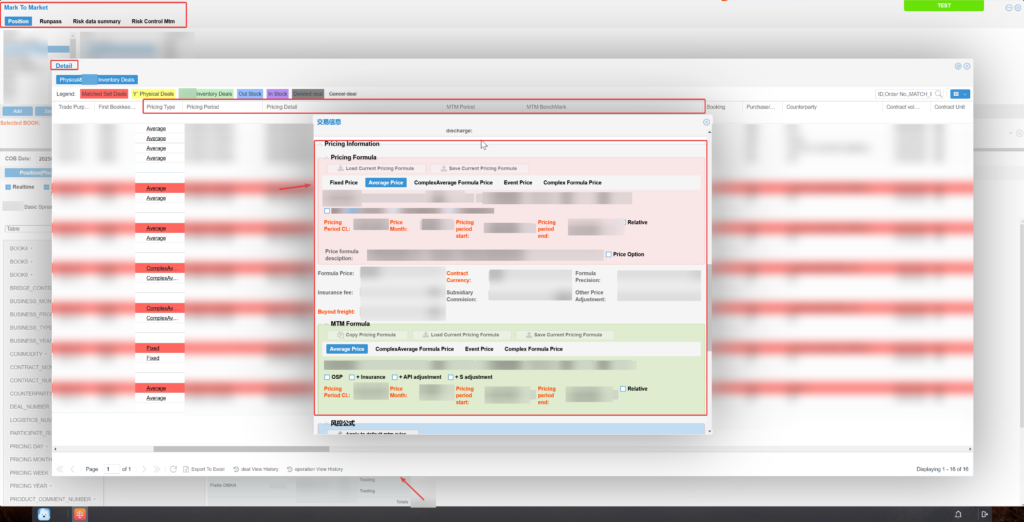
2. Enhanced Data Sharing and Consistency
Fusion integrates transaction, risk, and management data within a unified framework, ensuring real-time data sharing and updates across modules. This maintains information consistency and improves decision-making accuracy.
For example, logistics data in the transportation execution module synchronizes with the trade execution module, providing real-time updates on logistics progress. Similarly, inventory information from the inventory module syncs seamlessly with the trade execution module, ensuring accurate inventory tracking.
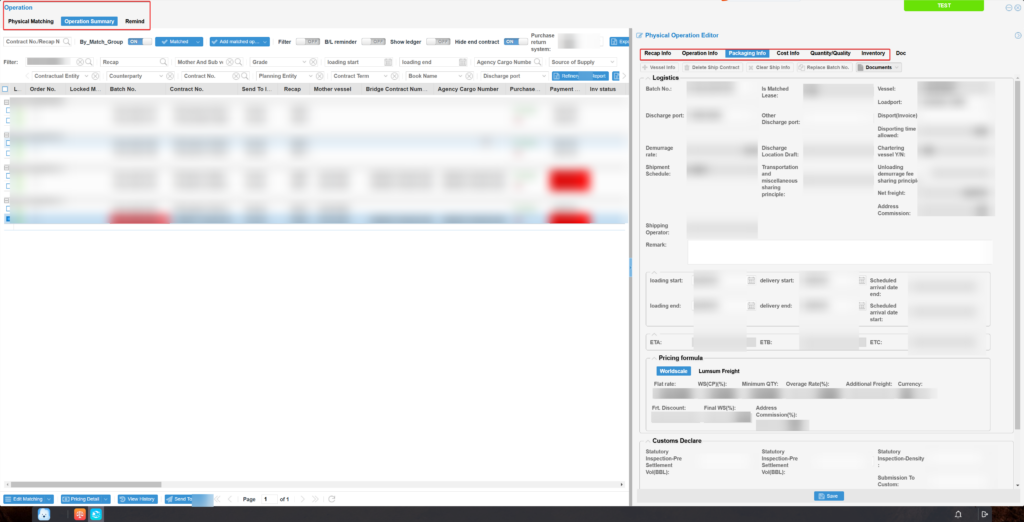
Fusion also provides data-driven panoramic management, enabling effective management across multiple dimensions such as trading, risk, and finance. Real-time updates in credit and profit-and-loss reports help enterprises identify potential risks and adjust strategies to manage market fluctuations effectively.
3. Flexible Adaptability to Complex Scenarios and Industry Needs
Fusion’s highly configurable and customizable features allow enterprises to adapt the system to their specific requirements, handling diverse business scenarios and industry-specific needs:
- Adapting to Complex Business Scenarios: Fusion supports various trading models, transportation routes, and contract management changes, enabling enterprises to adapt swiftly to market shifts. For instance, it offers real-time port monitoring, shrinkage analysis, and dispute handling, providing comprehensive logistics visualization for diverse trade modes and transportation routes.
- Meeting Industry-Specific Needs: Fusion addresses unique demands in the commodities sector. For example, it includes quality monitoring and claims ledger features to improve trading efficiency and swiftly address quality issues.
- Modular Scalability: Fusion supports modular expansion, allowing enterprises to add or remove modules as needed. Customizable modules, internationalization features (e.g., multi-language, multi-time zone), and flexible configuration of commodities and price benchmarks help enterprises navigate global operations and industry innovations.
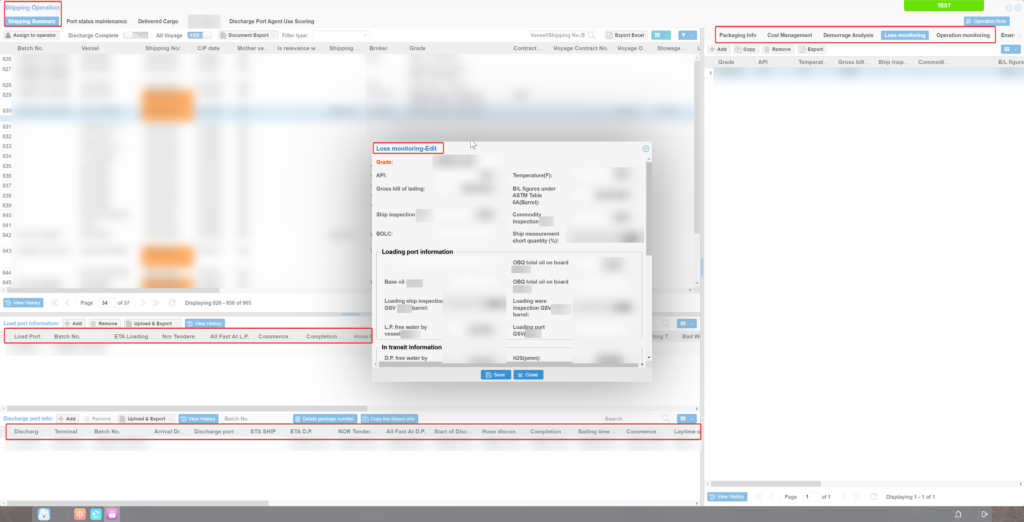
4. Comprehensive and Efficient Risk Management
Fusion delivers robust risk management solutions covering market, credit, and compliance risks. Its mark-to-market calculator provides real-time updates on profit-and-loss reports, helping enterprises quickly identify market risks. The counterparty management module evaluates partners’ credit limits and risks, ensuring reliable collaboration. Meanwhile, the compliance platform supports adherence to regulatory requirements, mitigating compliance risks.
By integrating with business modules, Fusion offers holistic risk management. For example, the integration of physical trading and hedging plans balances market risks, while financial residual payment management reduces credit risks and minimizes potential losses.
5. Lower Costs and Higher Efficiency
Fusion integrates multiple functionalities—trading, risk, finance—into a single platform, significantly reducing the need to purchase and maintain multiple systems. Enterprises can streamline operations by relying on one platform for all processes, improving information processing efficiency and lowering operational costs.
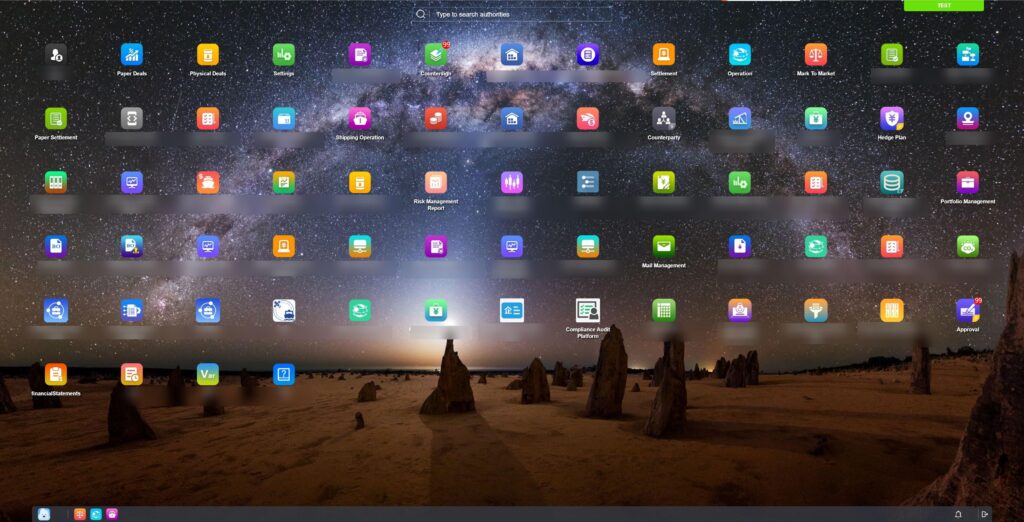
6. Enhanced Collaboration and User Experience
Fusion strengthens cross-department collaboration through its unified collaboration management platform, offering workflow management, approval processes, and document handling. Customizable approval workflows ensure efficient inter-departmental communication and information sharing. Fusion’s consistent interface and intuitive design reduce learning curves, significantly improving work efficiency.
As evident, Fusion’s functional integration and high degree of customization effectively address challenges in trading, risk management, data sharing, and scenario adaptability. The next section will compare Fusion with traditional single-function platforms to highlight its unique advantages in meeting the complex needs of commodities trading enterprises.
Ⅲ. Comparative Analysis: Fusion vs. Traditional Single Platforms
Traditional single platforms (such as ERP systems or dedicated trading platforms) often face challenges such as fragmented functionality, data silos, and limited adaptability. In contrast, the Fusion system overcomes these issues with its unique integration design, offering a more efficient, flexible, and comprehensive solution.
| Dimension | Single Platforms | Fusion |
|---|---|---|
| Functional Integration | Fragmented between general management and trading | Seamless integration of trading, risk, and financial processes |
| Data Sharing and Consistency | Data silos hinder information sharing across modules | Real-time data sharing across modules for better decision-making |
| Scenario Adaptability | Poor adaptability to industry-specific needs, limited customization | Highly customizable to meet complex commodity trade requirements |
| Risk Management | Incomplete risk management features | Comprehensive multi-dimensional risk management with real-time alerts |
| Cost and Efficiency | High maintenance costs, inefficient data flow | Lower integration costs, streamlined operations, and efficient data flow |
| Collaborative Workflow | Poor departmental collaboration, inconsistent interfaces | Unified interface for seamless cross-departmental collaboration |
Fusion vs. Single Platforms
The comparison highlights that traditional single platforms are typically limited to specific functional areas, lacking the cross-module data sharing and integration needed to meet the increasing complexity of commodity trading enterprises. Fusion’s comprehensive design not only addresses these limitations but also provides flexible configuration, robust risk management features, and enhanced operational efficiency to adapt to dynamic market conditions.
Ⅳ. Case Study: H Company’s Success with Fusion
H Company serves as a prime example of Fusion’s successful application, showcasing how it optimizes trade and risk management, supports global operations, enhances data sharing, and adapts to market changes. Below are specific use cases demonstrating Fusion’s ability to improve business efficiency and competitiveness:
1. Optimizing Trade and Risk Management
Fusion integrates physical and financial trading with risk management modules, enabling H Company to achieve end-to-end precision management. For instance:
- By utilizing the quality control module, H Company significantly reduced quality disputes, improving trading efficiency and customer satisfaction. Processing time for quality disputes decreased by 15%, and the trading cycle shortened by 20%.
- Real-time profit and loss analysis combined with market risk management enabled the company to stay on top of market dynamics, avoiding potential losses of millions of dollars.
2. Supporting Global Operations
Fusion’s internationalization features (e.g., multi-language and multi-time zone support) allowed H Company to efficiently meet global operational needs:
- In cross-border financial management, Fusion ensured accurate accounting of global transaction costs and profits. It seamlessly synchronized financial data in areas such as settlement and fund management, reducing financial reporting time by 30% and mitigating compliance risks.
3. Enhancing Data Sharing and Decision Support
Fusion eliminated data silos through seamless integration and real-time updates:
- H Company synchronized transportation execution data with trading data, ensuring real-time updates to the financial system. This enhanced decision-making efficiency in transportation management, reducing delays by 20%.
4. Flexible Modular Expansion
Fusion’s modular design enabled H Company to flexibly customize and expand modules based on market demands:
- By configuring a new trading management module, the company increased the speed and accuracy of global business operations. During the launch phase of a new product, processing speed improved by 25%.
Through these specific applications, Fusion demonstrated its ability to automate and integrate trade execution, risk management, and financial accounting. It also significantly enhanced global business management efficiency, boosting H Company’s global competitiveness.
Ⅴ. Conclusion and Outlook
In summary, the Fusion system stands out by seamlessly merging professional trading tools with general management platform functionalities. This provides commodity trading enterprises with a comprehensive, precise, and flexible solution. By integrating trading, risk management, and financial modules, Fusion helps companies significantly reduce costs, improve efficiency, and enhance collaborative workflows and decision-making capabilities.
Looking ahead, Fusion will continue to drive commodity trading enterprises toward digitalization, automation, and intelligence. It aims to provide more tailored solutions, enabling businesses to gain a competitive edge in increasingly complex and dynamic markets.

